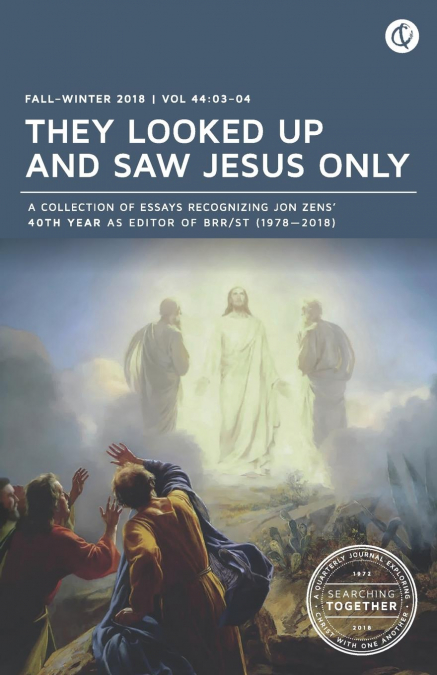
Jon Zens
Moving toward seeing 'Jesus only'In They Looked Up and Saw Jesus Only, Jon chronicles the contours of his personal journey, as reflected in his 40 years of editing BRR/ST from 1978–2018. Beginning with C.H. Dodd’s 1946 lecture in England, The Gospel and the Law of Christ, which signaled a turning-point in New Testament studies, Jon then presents highlights from his early writings, which have never been published or have been long out-of-print.Triggered by his 1972 reflections on “Of God’s Covenant” in the 1742 Philadelphia Confession of Faith, Jon was brought to question the major systems of theology, and began to see that Jesus inaugurated a New Covenant with His blood. This led him to focus on the New imperative to “love one another” as He loved us on the Cross. The “one another” in this love-command led him to realize that there were 58 “one another’s” running like a thread through the New Testament. This, in turn, caused him to ask, “How do the sisters fit in as these one-another’s are worked out in the life of Christ’s body, the ekklesia?” He became convinced that systems of theology generally had marginalized Christ, that most church structures were dominated by “the pastor,” thus minimizing the 58 one-another’s, and that Christ’s work was seen in the New Testament as a “New Exodus,” fulfilling the shadow of the mighty Red Sea exodus. As Augustine Stock put it: “The coming of Jesus is the new definitive Exodus—this is the burden of the Gospels’ message…The Exodus tradition then seems to be one of the most fundamental in Scripture. All stages of redemptive history subsequent to the first event used the Exodus to explain its own meaning. If modern readers no longer feel completely at home with it, this is only because they have lost their Scriptural heritage to a large degree.” (Cited in a very important book, Echoes of Exodus: Tracing a Biblical Motif, InterVarsity Press, 2018, p. 208; for further, deeper reflection see T. Desmond Alexander, Exodus: Apollos Old Testament Commentary, 2, InterVarsity Press, 2017, 764 pp.)